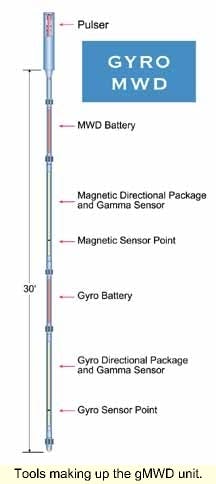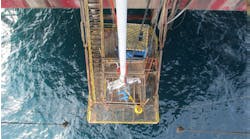Lessons learned from well kick analysis
Several deepwater kicks have been investigated over the past few years in water depths ranging from 2,000 ft to 6,100 ft, with interesting results. The well studies, as presented by Gary Nance of Randy Smith Training Schools at the IADC Well Control Conference, were on wells drilled by major operators in the Gulf of Mexico (semisubmersibles and dynamically positioned drillships). As a result of the kick analysis, a number of lessons were derived from the study.
For well control preparation:
- Designate a pore pressure detection team and have them on location during critical well intervals.
- Determine the potential impact of high equivalent circulating densities (ECD) associated with synthetic oil base mud and the importance of catching the kick on connections to prevent riser entry.
- Determine the significance of mud compressibility.
- Measure choke line friction pressure by pumping down the choke (or kill) line and up the riser.
- Plan for jug testing in lieu of testing for leak-off; with synthetic oil-based mud (SOBM), it makes the fractures downhole less prone to open.
- Clear the drillstring of weighted hole-cleaning sweeps prior to drilling ahead.
In terms of kick detection, observe the following:
- Flow check all connections and implement simulated connections.
- Time the ballooning/compressibility of flow returns to establish connection "signatures."
- Monitor MWD/LWD (measurment while drilling/logging while drilling) changes and flow check pore pressure indications.
- Ensure that U-tube effects of weighted pills will not cause flow increases during normal drilling.
For well kill procedures, there are other steps:
- Use the driller's method to begin circulating immediately.
- Avoid working the pipe to prevent stuck pipe with the well shut in.
- Sweep kill and choke lines prior to pump startup and circulate sufficiently for "bottoms-up" from the stack. To determine if influx may have entered the riser, measure gas units or check chlorides.
- Take returns up both choke and kill lines to reduce the impact of choke line friction.
- Use the kill line or wellhead monitor to account for choke line friction pressure.
With regard to kick behavior:
- Determine the loss of synthetic oil based mud (OBM) on pump startup.
- Kick behavior can defy logic, so stay focused on well control and circulation/pressure control.
Also, there are equipment use observations regarding well control in deepwater:
- Wellhead pressure and temperature sensors were in use in the early wells and should be installed and used on all deepwater rigs.
- Working pipe through the annular causes rapid wear in the cold temperature environments that are common in deepwater.
- Caution is advised when planning to flush stack gases with lightweight fluids, and avoid topside differential pressures across the blowout preventer stack (BOP).
Gyro MWD projects show correlation
Tools making up the gMWD unit.
In what may be the first commercial application of its kind, Scientific Drilling successfully completed three consecutive gyroscopic MWD (measurement while drilling) projects. The gMWDtrademark technology was used to drill from surface casing to total depth for a central California operator. Each well was drilled using a 4-in. drill string and 6.5-in. collars. The gMWD tool provided complete correlation of data between magnetic mode, gamma-sensing mode, and gyro mode.
A fourth run was recently completed in the US Gulf of Mexico. The project involved a kickoff at an estimated 1,100 ft. The tool was used to build an angle on a multilateral well set up, and the operation completed at 1,737 ft TVD (true vertical depth) after drilling (gyro-steering) for 760 ft MD (measured depth). The bottomhole assembly had the gyro sensor just above the motor at 33 ft from the bit, which was a significant factor when kicking a well off in surface hole.
With this dual probe system gyro-magnetic, it was possible to observe the correlation between the gyro and magnetic sensors, plus establish the depth at which the assembly was clear of magnetic interference. The tool provided real-time gyro heading. It allowed the driller to alternate between gyro azimuth/toolface and magnetic azimuth/toolface. Applications for this dual mode tool include any operations with magnetic interference, such as milling out of casing or work performed near existing wells. Also, dual mode operation permits determination of both magnetic interference and local magnetic distortions to 0.1 degree of azimuth. This infor-mation can then be used as a calibration of local earth-field anomalies for more precise magnetic steering.
A tool assembly incorporates three proprietary components:
- Keeper continuous gyro steering tool
- Golden Eye 16-bit magnetic and scintillation gamma steering tool
- Compensated Mud Pulser.




